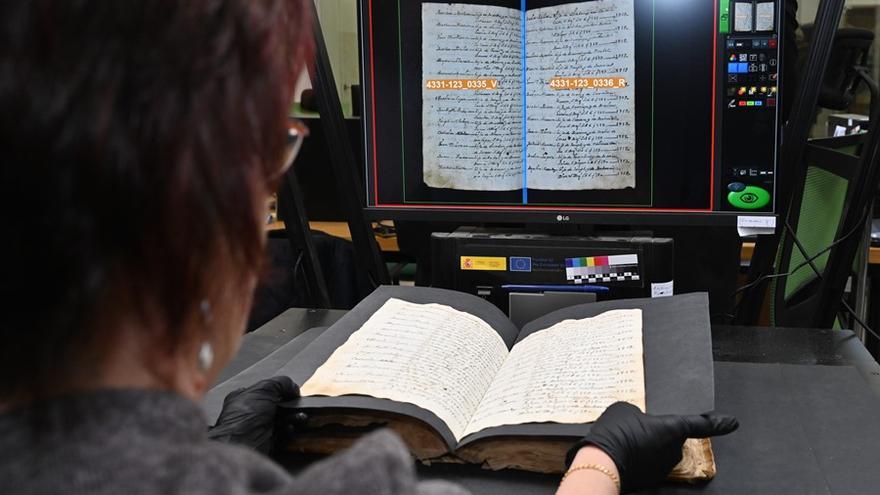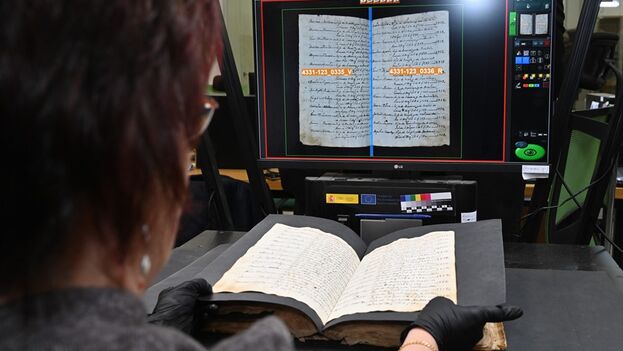
EFE (via 14ymedio), Almudena Álvarez, Palencia (Spain), January 9, 2024 — Dozens of petitions arrive every week to the Bishopric of Palencia, from different parts of Argentina and Cuba, to request the necessary documentation that proves the Spanish ancestry of the applicants so they can initiate the necessary procedures to acquire Spanish nationality.
This is one of the numerous utilities of the Diocesan Archive of Palencia, recently digitized in a database with 1.7 million records from 27,000 sacramental books containing data from parishioners dating back to the 16th century.
Since the Law of Democratic Memory was approved, which allows the great-grandchildren of Spaniards of origin to apply for nationality without having to wait for the parent, grandson or granddaughter of Spanish origin to obtain it in advance, the ecclesiastical records have received an avalanche of petitions.
“During the days of Christmas that we have been closed, more than fifty have accumulated,” says its director, Dionisio Antolín
Dozens of petitions arrive at the Diocesan Archive of Palencia every week. “During the days of Christmas that we have been closed, more than fifty have accumulated,” says its director, Dionisio Antolín, who emphasizes that there are many descendants of emigrants, mainly Argentines and Cubans, who look for their roots in the ecclesiastical records to request Spanish nationality.
Through these searches, not only do they get a paper to apply for nationality, but in many cases ties are strengthened, because “the children and grandchildren of emigrants are finding relatives, cousins that in many cases they did not know they had,” he added.
Applying for Spanish nationality and tracing the family tree to find your roots going back to 1540 is possible thanks to the records of the church, which for centuries has counted every birth, marriage and death in each town in Spain.
In Palencia, 27,000 sacramental books containing data about millions of people have now been safely transferred to a new facility.
The Diocese Archive of Palencia has just moved. Until now it was located in the episcopal palace, but the risk posed by obsolete i


